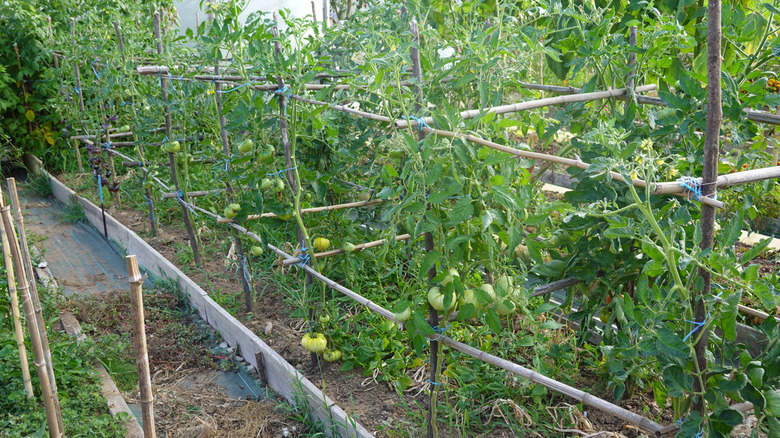We may receive a commission on purchases made from links.
If you have gardening on the mind these days, join the green thumb club. Reports show an increasing number of us — particularly young folks — are getting their hands in the dirt and growing their own these days. Blame it on the sky high prices at the grocery store, a desire to increase self sufficiency, or just a love of plants. As you mull over garden-adjacent topics like the pH of your soil, how to companion plant, and if seeds ever expire, trellises are another important consideration for a healthy garden.
In basic terms, a trellis is any sort of structure that provides support for certain varieties of climbing plants — they can include pricey, store bought contraptions or simple DIY structures built from repurposed materials. Their basic function is the same — and that’s to keep climbing plants — like cucumbers, certain varieties of beans, most tomatoes, and sugar snap peas — growing healthily, and vertically. Not sure if a plant needs a trellis? Give it a Google or ask nursery staff to clarify.
When needed, proper use of trellises make all the difference in growing healthy varieties of plants that naturally climb, sprawl, or flop over when left to their own devices. In addition to keeping plants tidy and maximizing space so sprawling plants don’t encroach onto each other’s space, trellises are important for giving plants ideal growing condition, improving air flow, and keeping plants off the ground and away from pests, soil-born diseases, and fungi.
Go all out or keep it simple with a DIY trellis
Search “trellis” and you’ll find all sorts of options for sale ranging from a simple “A-frame” to more elaborate and intricate structures that provide garden decor along with functional support. Luckily, as with many things gardening, you can craft beautifully functional trellises from repurposed and scavenged items from the yard, shed, or thrift store.
There’s no one right or wrong way to trellis — as long as it serves the purpose of providing a sturdy, climbable structure for plants to wrap around and grow up. Employ branches or bamboo stakes and fashion them into a teepee shape encircled with twine for beans. Or build your own more permanent trellises out of scrap wood, old pallets, or lengths of chicken wire or cattle panel (available at hardware stores) attached to fence posts in an archway for cukes to climb up.
Have the green thumb but none of the space? No problem! Plenty of plants thrive in pots, like tomatoes, which can be trellised with a tomato cage, inexpensive and available at any gardening store, or bamboo or sticks from the yard plus string to attach the growing tomatoes to the post (or use plant ties made just for this purpose.) To avoid the need for a trellis altogether, stick to “bush” variety plants — like zucchini, bush beans, herbs, melons, or pumpkins that happily grow right on the ground.






